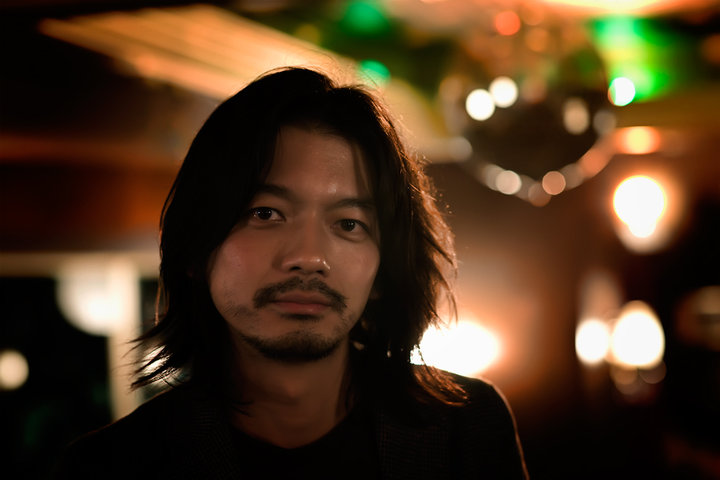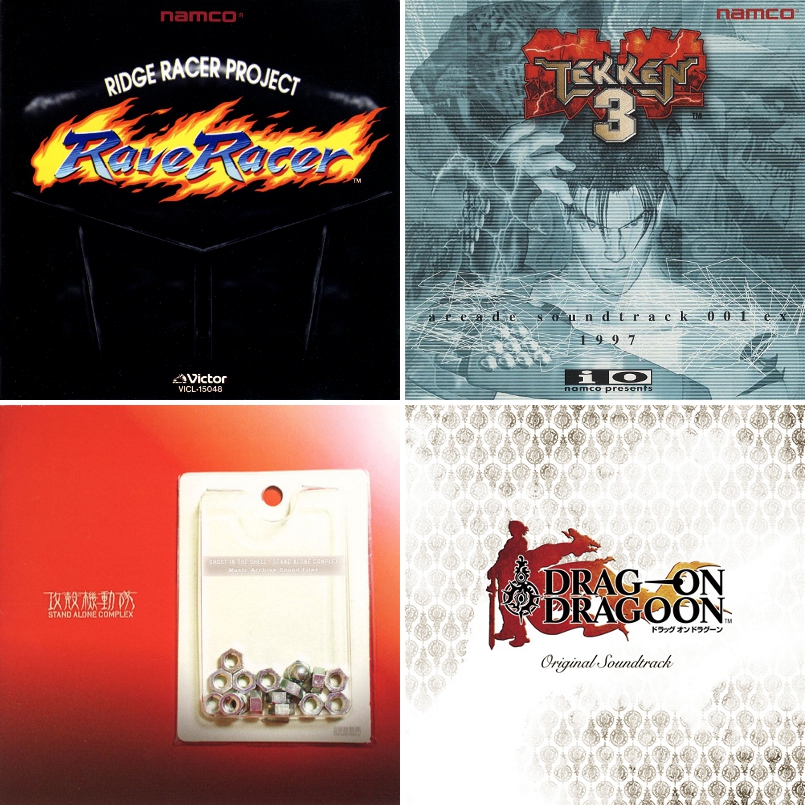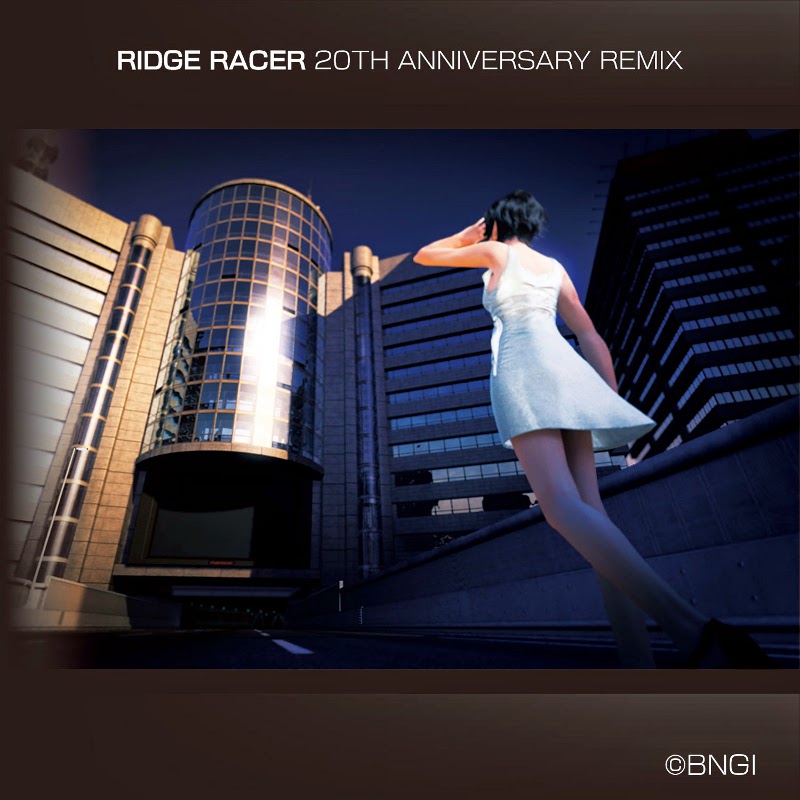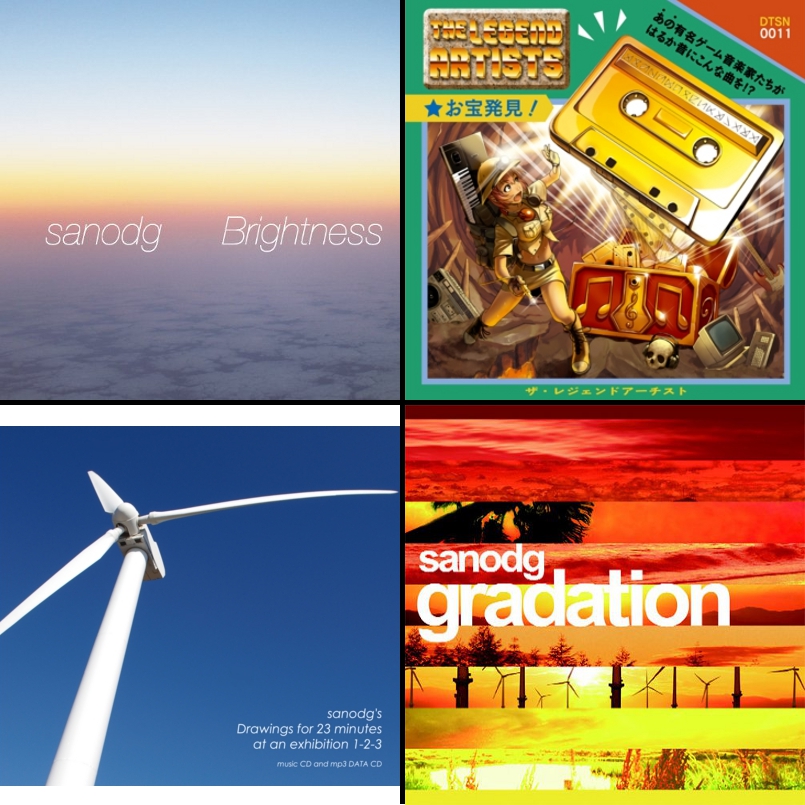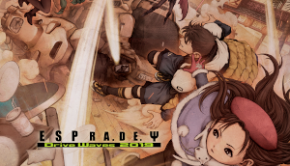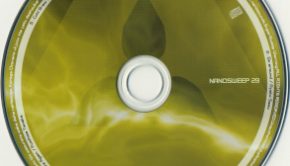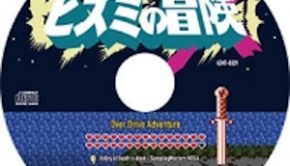Nobuyoshi Sano Interview: Musical and Technical Innovator
Nobuyoshi Sano (aka sanodg) is a true innovator in game audio. His musical creations include the cutting-edge big beat of Tekken, the chaotic orchestrations of Drakengard, and the electronic ambience of Ridge Racer. He has also pioneered technical innovations with his cutting-edge sampling and the ever-popular KORG synthesizer software and apps. The artist’s multifaceted work also includes original albums, remixes, band productions, and community projects.
In this interview, Sano gives a taste of the sanodg sound. He discusses his journey from composer at Namco, to sound director at Cavia, to creator of the independent production company DETUNE. Along the way, he provides insight into his various game and original works, provides some charming reflections of his early days, and gives a tempting outlook for the future.
Interview Credits
Interview Subject: Nobuyoshi Sano
Interviewer: Chris Greening
Translation & Localisation: Ben Schweitzer
Editor: Chris Greening
Coordination: Chris Greening, Don Kotowski
Interview Content
Chris: Nobuyoshi Sano, many thanks for talking to us today. First of all, could you tell us what led you to become a game music composer? What were your early musical experiences, education, and influences?
Nobuyoshi Sano: Everything began when I encountered Yellow Magic Orchestra and Space Invaders (and of course Star Wars as well!) in elementary school. Through Yellow Magic Orchestra I came to know synthesizers, and through Space Invaders I came to know video games; both of them left a big impression on me.
At the time, though, I had no inclination whatsoever towards composing video game music. In college, though, I was searching for a place to work, and by coincidence I came to hear that Namco, the game developer I loved so much, had put out a hiring call for a sound designer. As a result, I decided to try and apply for the job, and that was how it started.
Chris: Your latest album, sanodg’s Arcade Game Music Works, releases the music of some your earliest game for the first time. Could you tell us more about your early experiences at Namco? How did you approach writing and implementing music for arcade machines?
Nobuyoshi Sano: When I began working at Namco, I was amazed by how much I loved the music my seniors in the sound design department were creating. At the same time, I became very worried that I would not be able to do the job well enough.
Of course, when I began creating music for arcade games, there weren’t any clear rules or methods laid out for us. As I hadn’t had any formal musical education, I would have broken them even if there had been any. So I ended up proceeding by trial and error, trying to get a bit closer to the things I was imagining as I went.
Sure enough, my ability to create sounds and music increased right before my eyes, and spurred on by seeing the things I had created get out into the world, I came to find that my work was exciting and I had no time to worry.
Chris: Numan Athletics was particularly influential for its day with its underground techno influences. What inspired you to adopt this approach for this title when so much other game music was pop-flavoured at the time? Do you think this score was a reason you ended up working on the Ridge Racer series?
Nobuyoshi Sano: In my mind, the techno I loved was a perfect match for the atmosphere of Numan Athletics. The fact that at the time, the majority of game music was not influenced by techno was also a factor.
Techno was well-suited for the heavy restrictions of that era of video game sound, when there was so little memory and so few musical voices available. I also felt that it would be worthwhile for me, having no formal musical education, to create in a genre that I could replicate by feeling.
I agree that Numan Athletics was a big part of the reason I ended up working on the music for the original Ridge Racer.
Chris: Ever since the first instalment, you have regularly made guest contributions to the Ridge Racer series. Looking back at all your contributions, which titles and tracks are you most proud of?
Nobuyoshi Sano: My favorite tracks span tracks from throughout the series’ history:
Grip (Ridge Racer 2)
Exh*Notes (Rave Raver)
Chrome Drive (Ridge Racers)
Virtuoso (Ridge Racer Vita)
However, my favorite title is Rave Racer. As I was also working on the sound design, I remember Rave Racer particularly well. In that era, all of the music in Namco arcade games would have its own sound design unique to that game.
Chris: Your soundtrack to Tekken 3 is also widely regarded as one of the most influential of all time. Could you tell us more about why and how you took a big beat approach to this soundtrack? How did you make the music sound so good with the technology available at the time?
Nobuyoshi Sano: I was a huge fan of big beat music back then, Chemical Brothers in particular. Because of that, I wondered if it wouldn’t fit really well if the music in fighting games were less happy and more cool. There was a feeling of distance that I was fond of that came from using the best electric guitar sample I could create in a cool manner. Using a lower BPM in a fight made for a feeling of weight and stickiness that I wanted to capture as well.
There were certainly a number of technological restrictions as well, but they didn’t make creating the music all that difficult. I feel that, on the contrary, those restrictions ended up giving Tekken 3 its own particular atmosphere.
Chris: Together with Shinji Hosoe, you were also extremely active as an original artist through groups such as Oriental Magnetic Yellow, Manikyua-Dan, and Sampling Masters. Could you share some of your memories of working in such groups?
Nobuyoshi Sano: All of us who worked as members of Hosoe’s projects, including myself, would stay over at the office pretty much every day, creating game music together and composing together, so it felt a lot like living together. As if it were always the day before the school festival, every day would be new and exciting.
Chris: Moving to your post-Namco works, Drakengard seemed to have a Rite of Spring-like reaction: while it initially caused repulsion, it is now widely appreciated by both Japanese and Western audiences. What do you think about this turnaround, as evidenced by the reprint of the soundtrack? Did the initial reaction provoke you to take a completely different direction for the sequel?
Nobuyoshi Sano: The game was released right around the time that 2chan (Japan’s famous anonymous internet message board) was beginning to take off in popularity, and every day I would see a huge volume of virulently negative comments on the music. Of course I had never assumed that this kind of music would have widespread acceptance, but I was shocked by how much the mounting criticism exceeded anything I had anticipated.
So I think I was more skeptical than anyone else when the soundtrack was rereleased ten years later. Although I had met a good number of people who told me “I was a fan of Drakengard‘s music”, and part of me was happy, it was an odd feeling because it brought back all of the bad memories of ten years earlier in vivid detail. That said, it certainly has held up quite well. But I didn’t end up participating in the music for the Drakengard sequels.
I’ve got to say that “Rite of Spring-like reaction” is a great expression! I think I’m going to have to use it myself.
Chris: While at Cavia, you also led the production of Resident Evil: Dead Aim and Ghost in the Shell: Stand-Alone Complex. Could you share how you approached these titles? What inspired you to take a distinctive electronic approach, rather than simply follow the precedent of past titles in those franchises?
Nobuyoshi Sano: In regards to Resident Evil: Dead Aim, I had been thinking for some time that it might be a good idea to have an all-synth score for a horror game. I went for a cool Goblin-like feel…
As for Ghost in the Shell: Stand-Alone Complex, I was really into drum’n bass at the time, and I felt that the genre matched the game’s feeling of speed.
Also, the direction that the majority of video game music of that era was taking (orchestral, rock, or fusion) didn’t match my strengths either as creator or as listener, and that also played a role in choosing other genres of music for the above titles.
Chris: Moving to your most recent projects, I wondered if you tell us about these recently-released albums and your contributions:
Nobuyoshi Sano:
Ridge Racer 20th Anniversary Remix: I made it with the goal of singing along with all of the fans at the album release event. And the other night that wish was granted. Everyone joined in singing with more enthusiasm than I had anticipated, so I was very happy.
Persona 3 Portable Voice Mix Arrange: This was my first experience with creating an arrangement using lines from the in-game dialogue. It was a lot like the old-style techno, where you would insert voice samples, and I enjoyed it more than I had expected.
Nier Tribute Album -Echo-: I produced a laid back electronic remix that I’m really fond of.
The Legend Artists: A collection of old tracks, slightly embarassing but nostalgic, from well-known video game composers. It was a project I had wanted to do for a while, and I’m glad that we were able to make it happen. I definitely want to do a follow-up.
Denji Mashi-Mashi Original Soundtrack / Denji Mashi-Mashi 2 Original Soundtrack: This is a radio soundtrack I worked on. Making it had the same kind of school festival feel as Manikyua-Dan [Editor’s Note: An electro-pop group that Sano formed with Shinji Hosoe and several other Namco members]
Chris: Since forming Detune, you have also produced three original albums, Brightness, gradation, and Drawings from 23 Minutes at an Exhibition. Can you tell us more about the concept and content of these albums? To what extent do you feel they reflect the core sanodg sound?
Nobuyoshi Sano: All three of these discs represent the “Sano sound” in its strongest, purest form.
When I am working on video game music production, there is always some kind of request from the developer, but Brightness and gradation are comprised only of the music that I myself desire to create. There wasn’t any particular concept behind the albums, but I feel that these two discs turned out quite well. Drawings for 23 Minutes at an Exhibition is also a collection of the “sounds” that I naturally want to create and that I want to hear.
Chris: Over the years, you have performed at several live events, ranging from group performances with the DS-10 Trio at Extra: Hyper Game Music Event 2008 to solo DJ performances at the Ridge Racer Night. Having started your career working behind-the-scenes, what’s it like to now bring your music live to thousands of fans? Do you have any interesting or amusing memories to share?
Nobuyoshi Sano: With club music in particular, you create a mix putting on tracks that you imagine will get the audience right in front of you going, and as I’ve had so many opportunities to do this kind of DJ activity lately, it’s become easy to imagine while I’m composing. I think it’s had a good effect on my music overall.
Chris: Your KORG synthesizers continue to go from strength-to-strength. Could you tell us more about how you conceived the KORG DS-10? What have been the latest developments of this project, for example with iPad and iOS apps?
Nobuyoshi Sano: The initial plans for KORG DS-10 came out of wondering if there weren’t any music games available. Discussions later turned to “wouldn’t it be interesting to make a synthesizer on the DS?” and that’s why we approached the people at KORG.
This is our most recent program. The KORG DSN-12 is the world’s first analog synthesizer simulator with a 3D oscilloscope. It really is a “synth you can see”!
Chris: Many thanks for your time today, Nobuyoshi Sano. Is there anything else you would like to say about yourself or your works? In addition, do you have any message for your fans around the world?
Nobuyoshi Sano: I have a lot of plans: another full length album to follow Brightness and gradation, a sequel to Drawings from 23 Minutes at an Exhibition, and a spinoff of the KORG DSN-12, “A Synth You Can See Even More”.
I really love the DJ style where you can “put on a track while talking”, “play just one track you’ve made”, or “keep playing just your favorite parts of the tracks you love”, and I would definitely like to try taking it overseas. My English may be lacking, but I would love to get the chance to visit your country!
Posted on August 11, 2014 by Chris Greening. Last modified on August 11, 2014.

